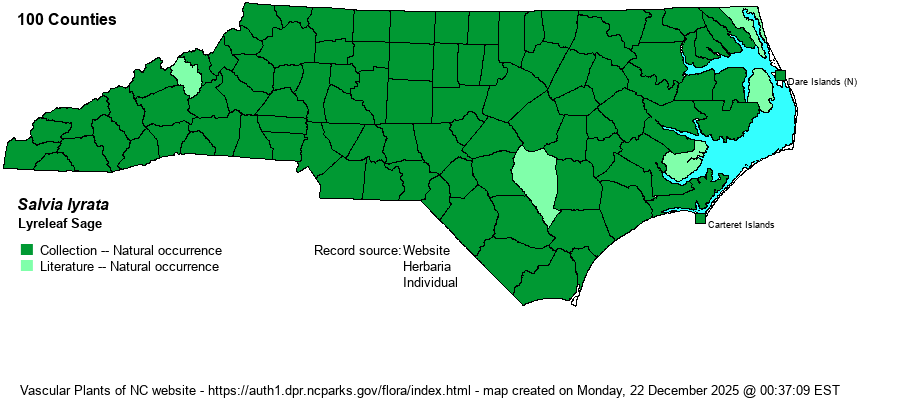| Author | L. | |
| Distribution | Occurs throughout the state and has been recorded in all 100 counties.
This is a very widespread Eastern species, found in essentially every county in the range from CT and MO south to the Gulf Coast.
| |
| Abundance | Very common across the state, slightly less so in the far eastern counties. One of the most common native species in the state. | |
| Habitat | This species occurs in a great variety of habitats, most weedy now. It is found in lawns, roadsides, weedy fields, powerline clearings, ditches, openings in bottomlands, and openings in various forest types. | |
| Phenology | Blooms mostly from April to May, but can bloom much later depending on mowing; fruits mostly from May to July. | |
| Identification | This is a very familiar plant, to many people seemingly a non-native weed. It has a basal rosette, each of these leaves is about 5 inches long and about 1-inch wide, in general shape oblanceolate, but with 5-7 oak-like rounded lobes. There may be some purplish color on these leaves. The mostly naked stem reaches about 1-1.5 feet tall, with an occasional branch or two. The flowers are in several "whorls" near the top of the stem, with about 6-10 tubular light to medium blue flowers, each nearly 1-inch long, at each level. These flowers are often drooping. No other species resembles this one, in leaf or flower, and it can be seen daily, often many times a day. | |
| Taxonomic Comments | None
| |
| Other Common Name(s) | Cancer-weed | |
| State Rank | S5 | |
| Global Rank | G5 | |
| State Status | | |
| US Status | | |
| USACE-agcp | FACU link |
| USACE-emp | FACU link |

